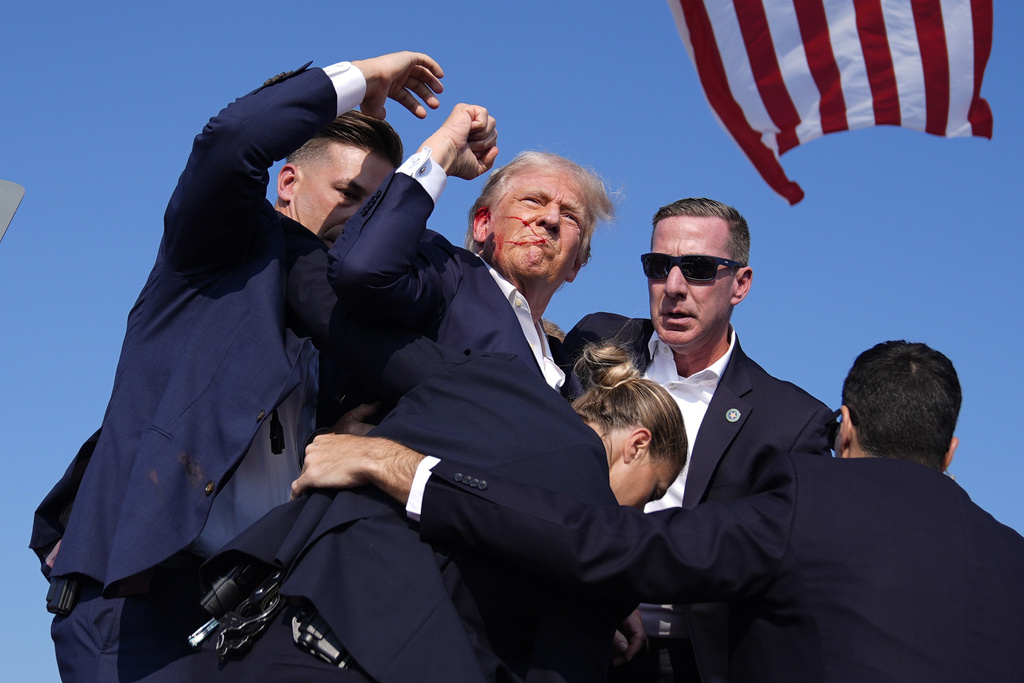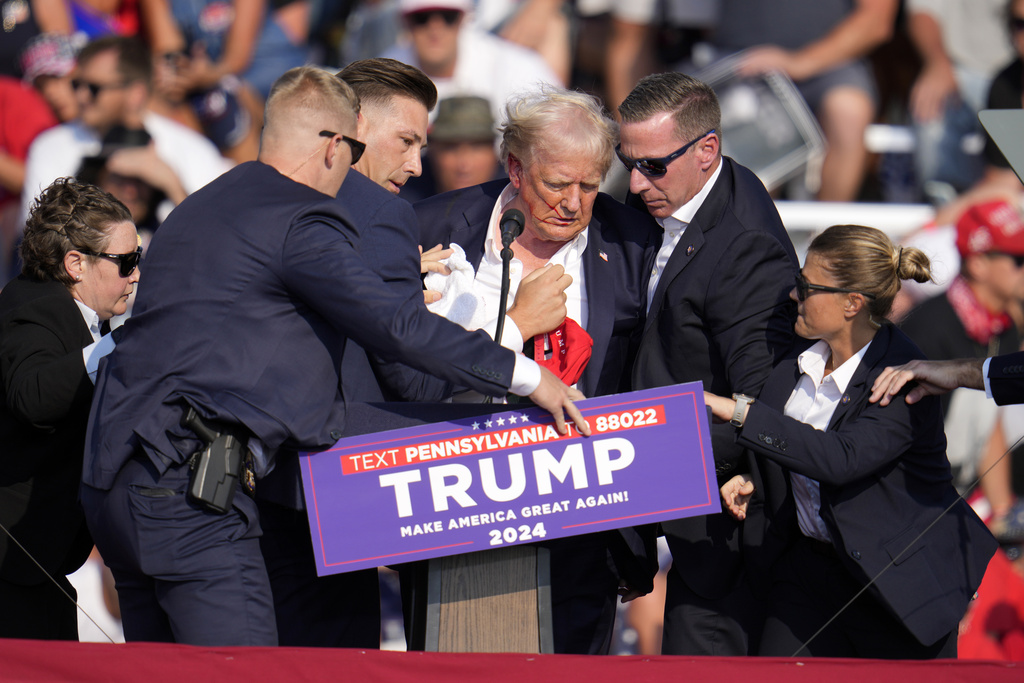Report Details Secret Service Failures in Trump Rally Shooting \ Newslooks \ Washington DC \ Mary Sidiqi \ Evening Edition \ A new Secret Service report outlines multiple security lapses in the July assassination attempt on former President Trump, noting line-of-sight risks were considered “acceptable” and farm equipment intended to block views was not deployed. The report, released publicly Friday, highlights communication issues and failures in securing nearby buildings, adding to scrutiny over the agency’s performance in high-stakes protection.

Secret Service Security Lapses at Trump Rally: Quick Looks
- Line-of-Sight Security Risks: Secret Service staff assessed the potential line-of-sight risks as “acceptable,” neglecting critical vulnerabilities.
- Farm Equipment Oversight: Equipment meant to block views from nearby buildings was not utilized, though the report doesn’t clarify why.
- Communication Breakdowns: The report cites a lack of coordination among law enforcement in the security room and radio issues with local agencies.
- High Temperatures Diverted Resources: With over 250 medical calls due to heat, security personnel were often diverted to assist rallygoers.
- Accountability Measures: While no specific firings were noted, Secret Service staff may face disciplinary actions for failing to meet security protocols.
Deep Look
The most striking element of the report is the Secret Service’s assessment of line-of-sight risks, which were flagged in advance but deemed “acceptable” by security staff. The line-of-sight issue revolved around several nearby buildings that had a direct view of the rally stage where Trump was scheduled to speak. The report reveals that although staffers identified these buildings as potential threats, they ultimately decided not to take further action to obscure the view. Tragically, this decision allowed the gunman, later identified as Thomas Crooks, to take an elevated position on one of these buildings and open fire on the rally. Crooks fired eight shots before he was killed by a Secret Service counter-sniper.
One proposed security measure involved using large pieces of farm equipment to obstruct views from potentially threatening vantage points, such as the buildings surrounding the rally site. However, the report indicates that this equipment was not deployed, and no specific reason was provided for this oversight. According to the report, several Secret Service personnel conducted a site visit ahead of the event but did not alert their supervisors to the unaddressed line-of-sight concerns, leaving a critical security vulnerability. This oversight has since been cited as a significant miscalculation in an operation designed to minimize all potential risks.
In addition to these logistical failures, the report addresses how high temperatures at the rally diverted a considerable portion of security personnel to manage medical emergencies among attendees. Over 250 rallygoers required assistance for heat-related issues, stretching security resources and causing security staff to redirect attention away from surveillance and protective duties. The report highlights a lack of coordination between campaign staff and security teams, which compounded the strain on available security personnel and contributed to gaps in event coverage. The agency’s failure to properly allocate resources in response to weather-related challenges reflects an operational shortfall in adequately adapting to unforeseen circumstances.
The findings in this report follow an initial Secret Service review published in September, which similarly criticized the agency for failing to prevent the use of elevated vantage points by the gunman. Friday’s release, however, offers a deeper insight into the communication failures, resource allocation issues, and overlooked risks that further compromised security. The unclassified seven-page version of the report, made public on Friday, is an abbreviated account of a more comprehensive classified report shared with Congress. It reinforces previous findings but expands upon the structural and procedural failures that left both rallygoers and Trump vulnerable during the event.
This report underscores the complex challenges faced by the Secret Service in protecting high-profile individuals in public settings. The agency’s “no failure” mission demands a level of vigilance and strategic planning that, as the report shows, was not fully met at the July rally. The Secret Service has acknowledged the need to improve coordination and communication with local law enforcement, especially when securing large-scale public events. As scrutiny mounts, the agency is expected to strengthen its protective measures, standardize interagency communications, and improve planning protocols to prevent similar incidents in the future.
Congressional leaders have voiced concerns regarding the security lapses identified in the report, urging the Secret Service to ensure that high-profile protective missions are conducted with the highest standards of safety and coordination. Meanwhile, the internal review continues as the Office of Integrity evaluates the findings, and officials work to implement corrective measures. This report serves as a critical reminder of the agency’s responsibility to adapt to evolving threats, particularly in settings where public access creates unique security challenges. With expectations high, the Secret Service must now work to rebuild trust in its protective mission, address its shortcomings, and ensure that the agency’s protocols are robust enough to safeguard those under its protection.







